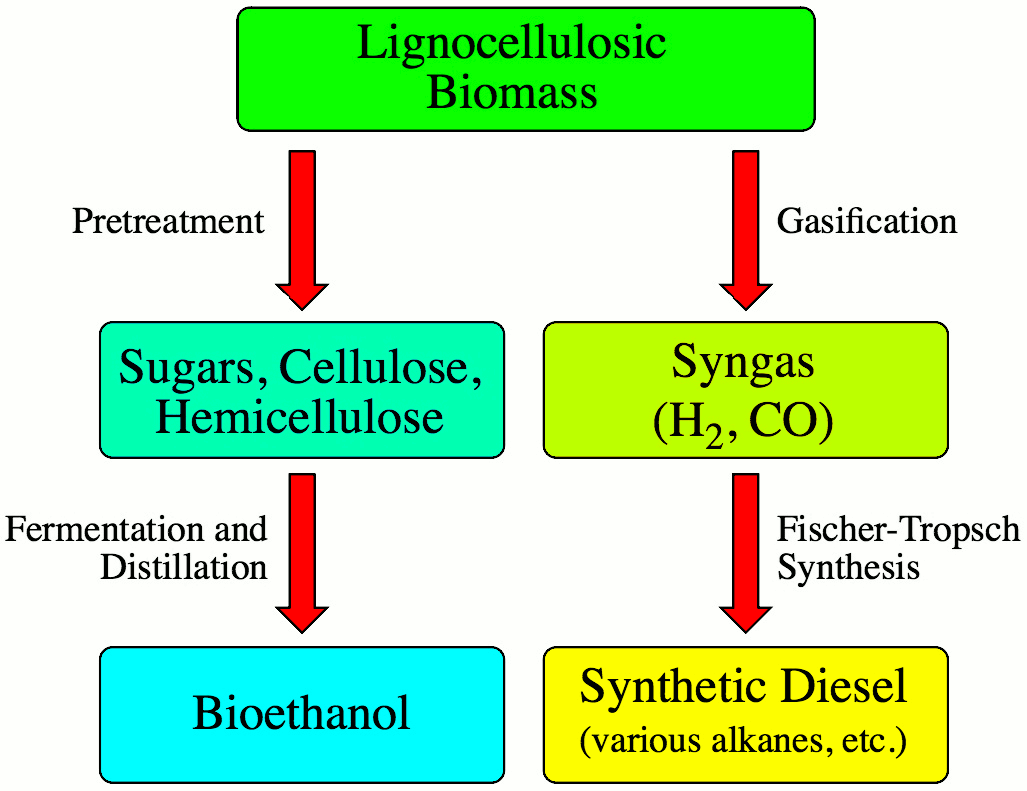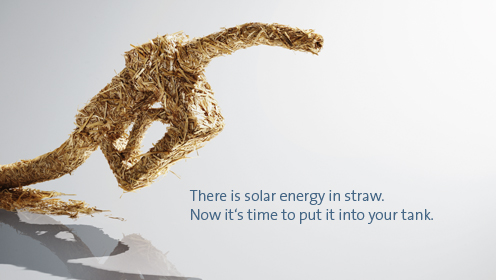Biofuel industry is one of the most burgeoning industries
throughout the World, attracting billions of capital investments from different
stakeholders. There are currently huge bombardments of propaganda all over the
globe in moving towards second generation biofuel. What is second generation
biofuel? To speak as a layman, second generation biofuel is basically an
advance production of biofuel, which its feedstock comes primarily from
non-crop based feedstocks. Current conventional first generation biofuels come
from crop based feedstocks such as from corn, palm oil and sugar cane. Second
generation biofuel utilizes the most abundant carbon storage feedstocks on
Earth, lignocellusic materials which are made up by plants via photosynthetic
activity. For examples are grasses, leaves and wooden materials. All of these
feedstocks are made available by plants freely and now have become the most
promising sustainable feedstocks as they have little pressure on food price and
crisis and can be considered environmentally friendly. Third generation biofuel is still new but will not be discussed in this short article (readers are recommended to search about this future technology for more information)
A simple diagram, showing a summary of different category of biofuel that you should know.
A bit advanced diagram, showing possible products of lignocellulosic feedstocks.
Lignocellulosic materials are made up of
lignin, celluloses and hemicelluloses. They are locked up by chemical bonds,
but if we manage to break the bonds, several types of simple sugars such as
glucose can be produced and could be used for fermentation to produce
biobutanol or bioethanol. This is very promising as Nature has given us with
several enzymes to degrade these lignocellulosic materials. Yet, due to its
high recalcitrant especially for lignin degradation, the process is still
inefficient. It is hoped that with current research and development, we will
find the right 'bullets' to attack and utilizes these sustainable feedstocks.
A creative picture, depicting a comprehensive idea of 2nd generation biofuel.
Malaysia is rich in biodiversity, variety
of flora and fauna. Most of these flora and fauna are still intact and
unexploited. We also have a big problem in managing our agricultural waste
feedstock and became of the countries in the World that carries out open
burning to clear all the waste materials such as rice straws, palm oils wastes
and ects. There is a tremendous
amount of resources that is not fully exploited. If we wanted to move on
towards 2nd generation biofuel, it is not even a hype if we have the
capability, the right tools and technology. Yet, having all of these things
alone will not enable our hope towards this ambition to be fruitful as there
are other major things that we need to consider especially in term of supports
and capital investments. It is hard to convince the investors to put their
money in this promising but little progress research and development. Of
course, the biggest proportion of investor will come from the government
itself. The government plays a critical role to implement the policy and create
the human capital. The exact future of this field is not really clear, but the
demand and pressure due to increasing oil prices years by years at least have
put them to think about this potentiality. At least, now we know that there is a
huge investment to bring first generation biofuel into reality. Many researches
to fully utilize palm oil wastes are being done yet still we do not see any
kind of products sold on the market within these few years.
The major hurdles in bringing specific
biofuel product to the main market are lack of capital investment and cost ineffective. If a company would like to pioneer in this technology, they
probably will end up closing the company due to the high cost of production.
The only way to overcome this is to find alternative technologies that enable
effective and efficient biofuel production or to convince current farmer's interest
towards this technology. It is not impossible yet requires a continuous
restless effort. Different organizations have to cooperate together, including
NGOs, non-profit and government organizations have to sit together and think
for the best.
Imagine a product like this, producing its in large scale requires different groups working together.
To remind, we are a country which has
enough and excess feedstocks which is not yet exploited. We have to realize our
own capability and able to create new business model and market. If we wanted
to move towards mission 2020; ideally assuming our community as entrepreneurial
scientists and able to stand on our own, this mission challenges us to think
independently, devising our own plan and strategy. Of course the people who
will get involved in the process are those who expert in this field. But we
cannot deny that this field also requires people who have nothing to do with
high-tech industry, especially people who live in rural areas. Creating new
industry in this area could mean creating new job opportunities. However, we
have to bear in mind that over-development will cause non-sustainable impacts.
To say whether second generation biofuel
is a hype, hope or promise, I will stand to say that this a promise and we need
positive hype to convince the people that we do really need this second
generation biofuel. We could not deny that the oil price is increasing plus we
could even feel the impacts on current economics because we are too dependent
on current fossil fuels. The promise is: moving towards second generation
biofuel in Malaysia means we will create new forms of the bioeconomy. This
promises us with partial or total independence from the volatile of oil and
food prices that circulates over the globe.
To conclude, the increasing of oil price
is unstoppable. Where there is a huge demand and lacks of supply of fuels, the
oil will increase until it ends up. The only way to preclude this is to replace
the current liquid fuel supply with a more sustainable biofuel. The first
generation is now beginning to emerge yet second generation is far from
reality. To say second generation as impossible promise, is something we need to avoid unless we have other alternatives to replace the conventional liquids fuels or brave enough to replace all of the vehicles on our roads with perhaps hydrogen fuel engines or perhaps we would like to see our next generations just cycling or walking -back to the early ages. I know this is a hype that I made myself. But remember, hype could be used to create hope, pressure and promise to pull any potential interests especially capital investments,
particularly from the governments and private investors. In terms of
resources, we have more than enough. Malaysia is not a promised land for us, but it is truly ours. Therefore, we have to use it optimally and take care of it properly. In term of implementation, lots of
consideration have to begin now. One of them, the best thing that an individual can make is to start making public engagement
and awareness like what I am doing now. I make hype so that this will create hope
and promise.
The best way to start is to speak up loud!
Amin Rukaini Mustafa
Bsc in Biotechnology, Msc in Biotechnology
(current student)
The University of Edinburgh, UK.






0 comments:
Post a Comment